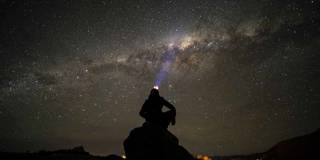The dangers of treating extinction risk as humanity’s overriding concern should be obvious. Viewing current problems through the lens of existential risk to our species can shrink those problems to almost nothing, while justifying almost anything that increases our odds of surviving long enough to spread beyond Earth.
PRINCETON – Twelve years ago, during the International Year of Astronomy that marked the 400th anniversary of Galileo’s first use of a telescope, I wrote “The Value of a Pale Blue Dot” – a reflection on how astronomy has revealed a vast universe filled with an unimaginable number of stars, thus shrinking the significance of our sun and our planet. The “pale blue dot” refers to how the Earth appears in a 1990 photograph taken by the Voyager spacecraft as it reached the outer limits of our solar system. The essay suggests that the knowledge gained from astronomy “forces us to acknowledge that our place in the universe is not particularly significant.”

PRINCETON – Twelve years ago, during the International Year of Astronomy that marked the 400th anniversary of Galileo’s first use of a telescope, I wrote “The Value of a Pale Blue Dot” – a reflection on how astronomy has revealed a vast universe filled with an unimaginable number of stars, thus shrinking the significance of our sun and our planet. The “pale blue dot” refers to how the Earth appears in a 1990 photograph taken by the Voyager spacecraft as it reached the outer limits of our solar system. The essay suggests that the knowledge gained from astronomy “forces us to acknowledge that our place in the universe is not particularly significant.”